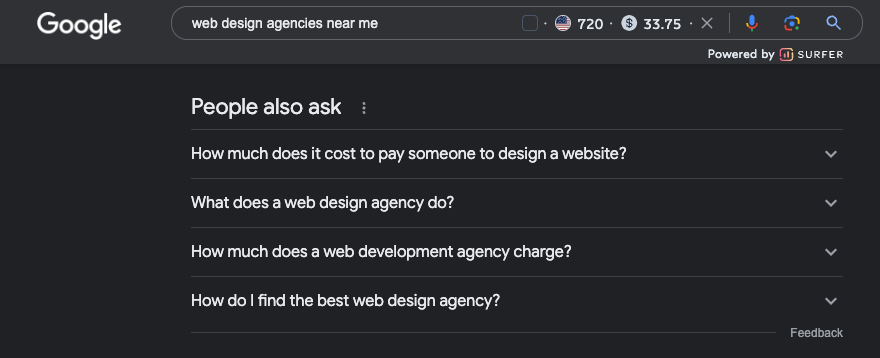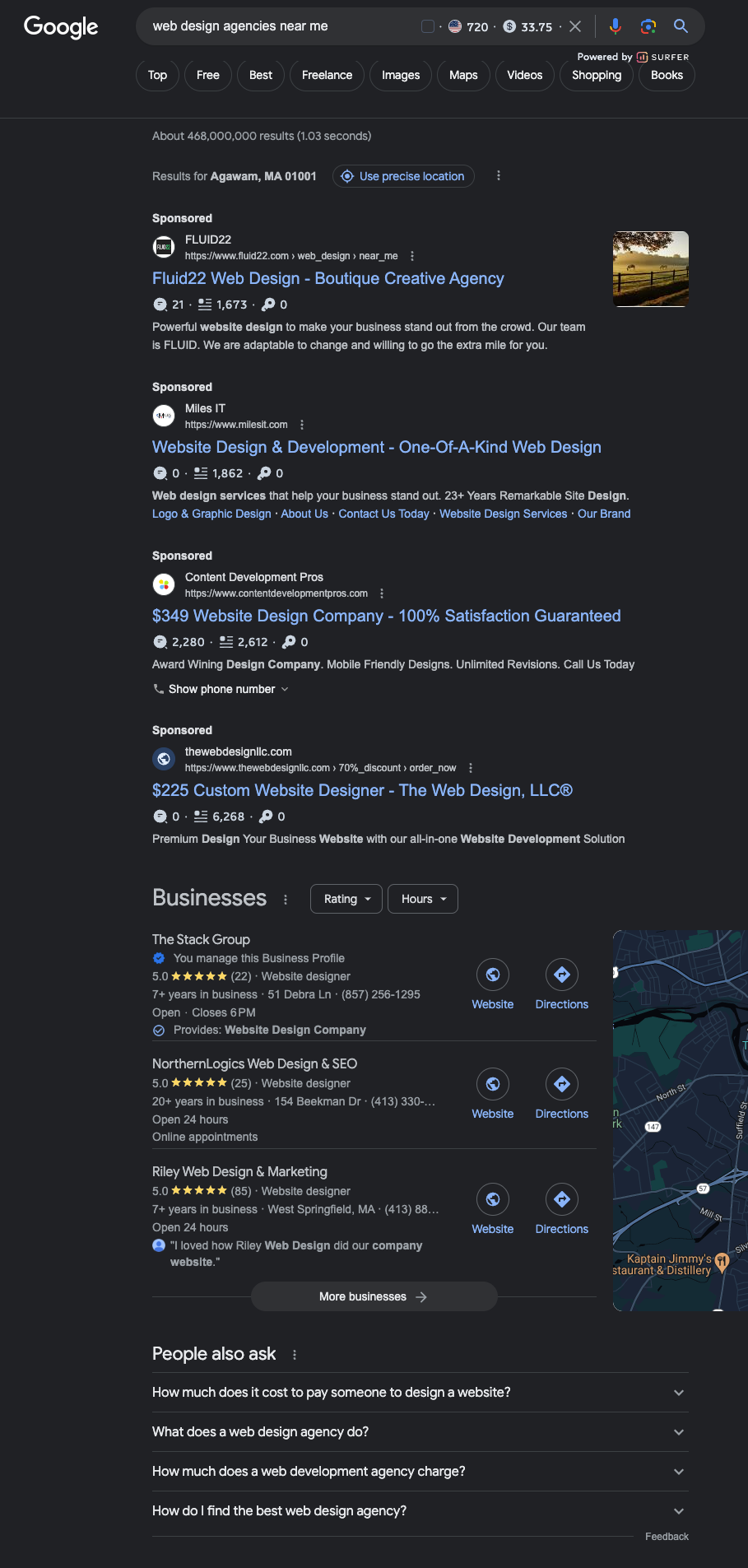Unlocking Hidden Opportunities: Leveraging Google's 'People Also Ask' for Your SEO Strategy
If you're like most marketers or business owners, you're already familiar with the staples of SEO—keywords, meta descriptions, and backlinks. (If you're new to SEO - check out our SEO guide) However, true mastery of SEO involves not just focusing on these basics but also capitalizing on lesser-known features that could offer untapped potential. One such hidden gem is Google's "People Also Ask" (PAA) feature.
This section can educate you as the marker about the types of questions and topics that are most interesting to your target audience. Additionally, it can provide a valuable starting point for content creation, as well as potential keywords you can use in your SEO strategy.
What is People Also Ask or PAA?
Google's "People Also Ask" (PAA) is a dynamic feature that appears in the search engine results page (SERP) when users input queries. It usually manifests as a boxed area containing a list of questions related to the initial search term. When you click on a question, it expands to reveal an answer snippet, often extracted from a high-ranking page, and more related questions may populate at the bottom. The feature serves as an interactive FAQ, enabling users to delve deeper into specific or related topics without navigating away from Google's SERP.

Why is "People Also Ask" Valuable?
The "People Also Ask" section is not just a useful tool for search users; it's also a goldmine for SEO strategists and content creators. This feature provides a unique window into user intent, showcasing the kinds of questions that potential customers might be asking about a product, service, or topic. By examining the questions and their corresponding answers, you can gain insights into what information your target audience seeks. This enables you to create content that directly addresses these queries, increasing your content's relevance and chances of ranking higher in SERPs. Furthermore, the PAA section offers a sneak peek into the keywords and long-tail queries that you might not find through traditional keyword research tools.
How Does the "People Also Ask" Section Appear in Search and Does It Always?
You may have noticed that the "People Also Ask" box doesn't always appear in every Google search result. Its presence depends on various factors, primarily the nature of the search query and Google's ever-changing algorithms. Typically, PAA is more likely to show up for informational queries as opposed to transactional or navigational ones. For example, if you search for "how does solar energy work," you'll probably see a PAA box, but if you search for a brand-specific product, it may not appear. The algorithms take into account the utility of the PAA feature for enhancing user experience and may decide to include or exclude it based on a variety of considerations, including search trends and historical data.
By understanding the nuances of the "People Also Ask" feature, you can better strategize its integration into your SEO plans. Its presence—or absence—can offer clues about what type of content Google considers valuable for a specific search query, aiding you in tailoring your content accordingly.
Here is a local search query example below for web design agencies near me. You can see the PAA section appears below the "Sponsored" (paid) section, below the google maps section but above the organic search results section. This example proves how valuable this section can be as it's appearing above the #1 search result spot in the organic search listings.

5 Tips on How to Use "People Also Ask" to Benefit from Search Traffic
Tip 1: Keyword Research
Traditional keyword research tools can sometimes miss the mark when it comes to long-tail queries. The PAA feature can help fill this gap by displaying questions that users are actually asking. Incorporate these queries into your content to improve your chances of ranking for such terms.
Tip 2: Content Expansion
The "People Also Ask" questions are perfect fodder for expanding your existing articles or creating new, more targeted ones. If you notice questions that relate to content you’ve already published, consider updating your article to address these new queries.
Tip 3: Featured Snippet Targeting
Google often pulls the answers to PAA questions from featured snippets. By crafting your content to directly answer these questions, you increase your odds of capturing a featured snippet, which, in turn, elevates your visibility on the SERP.
Tip 4: Voice Search Optimization
Voice searches are often phrased as questions, making the PAA box an invaluable resource for voice search optimization. Incorporate natural language and question-based queries into your content to make it more voice-search-friendly.
Tip 5: Monitoring Competitor Questions
Often, PAA will include questions that lead to competitor websites. Monitoring these can give you a competitive edge. It offers insights into what your competitors are ranking for and provides you with ideas for content that could outperform theirs.
Why "People Also Ask" is Your SEO Secret Weapon
Navigating the complexities of SEO requires an open mind and a willingness to explore unconventional avenues of opportunity. Google's "People Also Ask" feature represents one such path less traveled but rich in potential. From gaining deep insights into user intent and expanding your content portfolio to enhancing your voice search capabilities and even outmaneuvering competitors, the benefits are multifaceted.
As you refine your SEO strategy, don't overlook this powerful tool that can not only increase your visibility on Google but also bolster your reputation as a thought leader in your field. Remember, in the dynamic landscape of SEO, sometimes the questions are as important as the answers. Whether you're leveraging affordable SEO services or working on your own SEO campaign, incorporating PAA into the mix can help you get one step closer to success.
Questions? Have a project you're ready to launch?
Simply text our team at
(857) 256-1295 or send us a message!
Latest Articles



